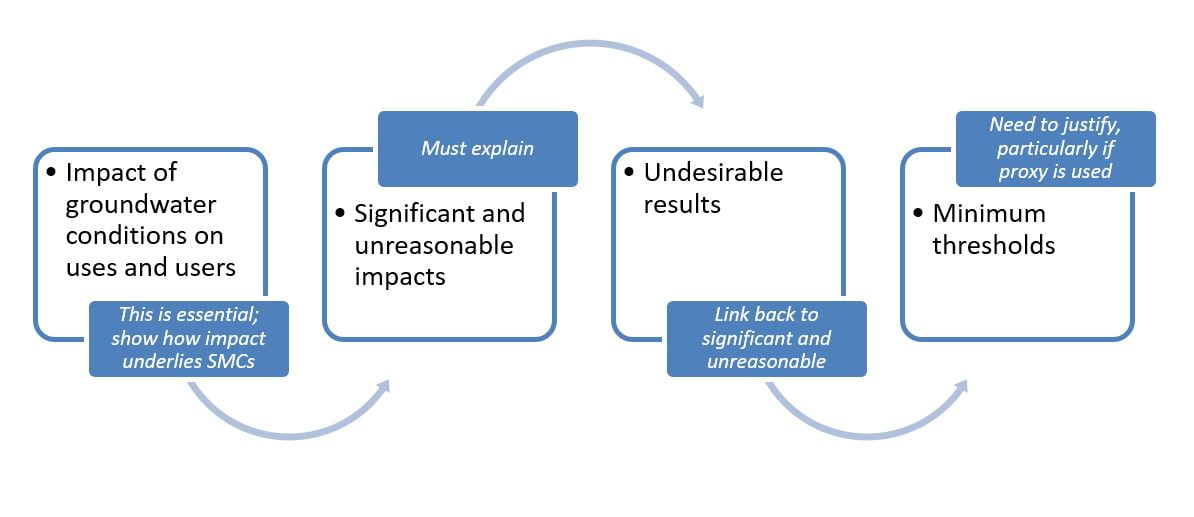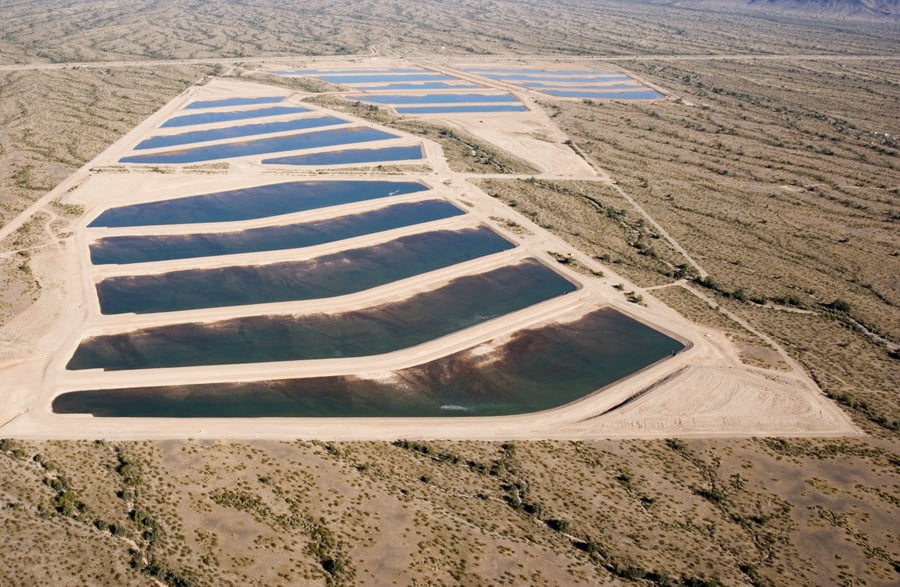The past 5 years have taught us that a Groundwater Sustainability Plan (GSP or Plan) is essentially a roadmap to groundwater sustainability in California. As implementation of the Sustainable Groundwater Management Act (SGMA or Act) continues to progress, the recent Department of Water Resources (DWR) determinations on submitted GSPs help us better understand the expectations state regulators have for future groundwater management, which will have broad implications for groundwater use, water supply reliability, and the cost of water.
M&A experts summarized common themes and key issues found in DWR’s initial GSP assessments, published in the 2022 Hydro Note SGMA Experts Interpret DWR’s GSP Assessments. Now that DWR has reviewed the 12 plans that were initially incomplete and issued assessments on the 6 determined to be inadequate, we reviewed the new determinations to gain further insight on how to navigate SGMA implementation considering DWR’s expectations.
GSPs are not merely technical reports, but rather policy documents that set the goals and approach for long-term groundwater and water supply management to reach groundwater sustainability. Meeting the State’s bar for an acceptable GSP requires reading the regulations carefully, understanding DWR interpretations of regulations, and applying them to local contexts. GSP regulations can be interpreted in different ways, but ultimately it is DWR’s responsibility to ensure that all GSPs follow the regulations and the intent of the Act, while allowing for flexible approaches to local groundwater management. M&A’s SGMA team members reviewed the latest DWR determinations on the 2020 resubmitted GSPs to see which Plans were approved and how the Groundwater Sustainability Agencies (GSAs) revised them. Overall, our review focused on whether the GSPs provided more detailed explanations, conducted additional evaluations, added or better articulated mitigation programs, and/or revised their Sustainable Management Criteria (SMC).
Key insights from M&A’s review
1. Identify and avoid detrimental projects
GSPs must explain how the impact of groundwater conditions on uses and users determines which conditions are considered significant and unreasonable and how Sustainable Management Criteria (SMC) are based on those considerations. Assessing the impact of SMC benchmarks on users is important, particularly with respect to groundwater levels. Several DWR comments highlighted how groundwater level declines could cause subsidence or impair domestic wells, which some GSAs successfully addressed with greater evaluation and others addressed with a mitigation program. DWR accepted anticipated groundwater level declines in some cases if GSAs showed that declines would not produce significant impacts; however, all 6 resubmitted GSPs that were deemed inadequate also had concerns regarding subsidence impacts on land uses.

2. Set appropriate goals
GSPs must first focus on setting appropriate goals for each basin before planning for the future. For example, GSPs that allowed groundwater levels to decline were, in general, less likely to be approved, particularly where declines would have detrimental impacts; however, not all resubmitted GSPs raised the groundwater level SMC to historical levels. In many assessments, DWR took issue with basin groundwater level thresholds that were based on modeled or projected values rather than historical values or domestic well depths, particularly where they allowed further groundwater level declines that could impact wells or cause subsidence. Comments on interconnected surface waters (ISW) were also common; DWR made it clear that GSPs need to set SMC for ISW unless they demonstrated lack of connectivity. Overall, DWR comments focused on appropriately setting SMC to avoid significant and unreasonable impacts, rather than setting unrealistic goals or including insufficient projects and management actions to reach sustainability.
3. Account for relationships between sustainability indicators
The impact sustainability indicators have on one another cannot be ignored. The 6 sustainability indicators are interrelated when it comes to groundwater management. For example, if groundwater was allowed to drop below historical levels in an area that has experienced subsidence in the past, further subsidence may occur with lower groundwater levels, and this effect should be avoided. GSP Regulations require that minimum thresholds avoid causing undesirable results of the other sustainability indicators. The relationship between groundwater levels and groundwater quality also adds insight into how DWR is assessing GSPs. GSPs must show that allowing for lowering of groundwater levels will not cause groundwater quality impacts. This concern was not as common as subsidence, potentially due to the irreversibility of subsidence. ISW was the one sustainability indicator where GSAs were given some leeway; DWR acknowledged ISW is challenging and noted guidance would be forthcoming. As long as GSPs set SMC where ISW is present and plan to gather data, DWR gave a pass.
4. Collaborate and coordinate
The ability to work collaboratively with other GSAs and develop coordinated, consistent GSPs within each basin was paramount. Being able to work with neighboring and partner GSAs will also be key in implementation. DWR was adamant about consistency, particularly for water budget development and SMC. GSAs successfully addressed consistency deficiencies by using the same methodologies, formats, and language in their revisions.
As more GSAs refine their GSPs to meet DWR approval on the road toward groundwater sustainability, M&A experts learn more about the distinctions of each basin and region, expanding our ability to guide clients through the process.
About the Author
Abby Ostovar, Ph.D. is a water policy specialist at M&A who has led the development of the GSPs in the Salinas Valley. The Salinas Valley 180/400-Foot Aquifer Subbasin GSP was among the first to be approved by DWR.










